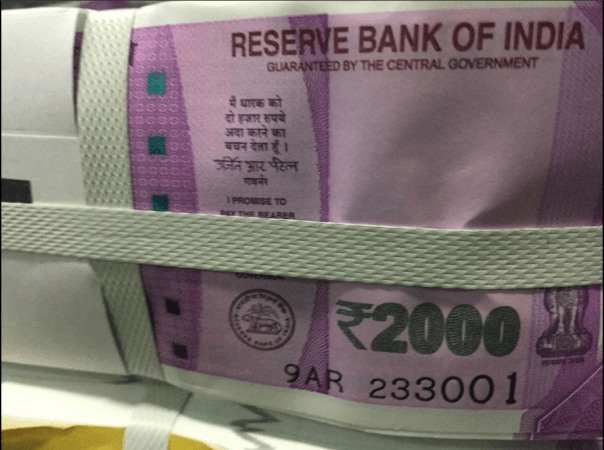
India is all set to add one more denomination to its currencies shortly. The Reserve Bank of India (RBI) will be issuing Rs 2,000 currency notes, the highest to come into circulation, even as some experts feel high-value denominations should be discontinued to curb black money.
The printing of these notes has been completed at the Mysuru currency printing facility. The notes are being despatched, the BusinessLine reported, citing sources. The daily added that neither the Indian government nor the central bank confirmed the development.
Currency notes and coins are printed/minted at about eight units owned by the Security Printing and Minting Corporation of India Limited (SPMCIL), a finance ministry company.
SMPCIL's two currency printing units — at Dewas in Madhya Pradesh and Nashik in Maharashtra — print about 40 percent of India's currency notes. Coins are minted at Mumbai, Hyderabad, Kolkata and Noida units of SMPCIL.
Currency notes and coins are printed/minted by the government of India on the advice of the RBI, which also estimates the denomination-wise currency needs, and co-ordinates with the government on design and security aspects.

The incidence of cash transactions and the huge volume of high-value currencies is unique to India, notwithstanding recent efforts to move towards cashless transactions. The two topmost currencies — Rs 500 and Rs 1,000 — accounted for about 86 percent of the new currency notes added in 2014-15, according to RBI statistics.
Some interesting information on currency notes in India
* The highest denomination note ever printed by the Reserve Bank of India was the Rs 10,000 note in 1938 and again in 1954. These notes were demonetised in 1946, and again in 1978.
* Currency paper is composed of cotton and cotton rag.
* The Government of India decides on the quantity of coins to be minted on the basis of indents received from the RBI.
* The Reserve Bank estimates the demand for banknotes on the basis of the growth rate of the economy, inflation rate, the replacement demand and reserve stock requirements by using statistical models/techniques.
* Notes are printed at four printing presses located at Nashik, Dewas, Mysore and Salboni. Coins are minted at the four mints at Mumbai, Noida, Kolkata and Hyderabad.
* The Reserve Bank presently manages the currency operations through its 19 Issue offices located at Ahmedabad, Bangalore, Belapur, Bhopal, Bhubaneswar, Chandigarh, Chennai, Guwahati, Hyderabad, Jaipur, Jammu, Kanpur, Kolkata, Lucknow, Mumbai, Nagpur, New Delhi, Patna, Thiruvananthapuram, a currency chest at Kochi and a wide network of currency chests.
* These offices receive fresh banknotes from the banknote printing presses. The Issue Offices of RBI send fresh banknote remittances to the designated branches of commercial banks.
* Coins in India are presently being issued in denominations of 50 paise, one rupee, two rupees, five rupees and ten rupees. Coins up to 50 paise are called 'small coins' and coins of Rupee one and above are called 'Rupee Coins'.
* Coins in the denomination of 1 paise, 2 paise, 3 paise, 5 paise, 10 paise, 20 paise and 25 paise have been withdrawn from circulation with effect from June 30, 2011 and are, therefore, no more legal tender.
Source: RBI

















